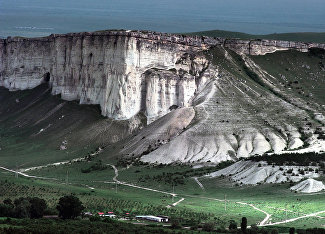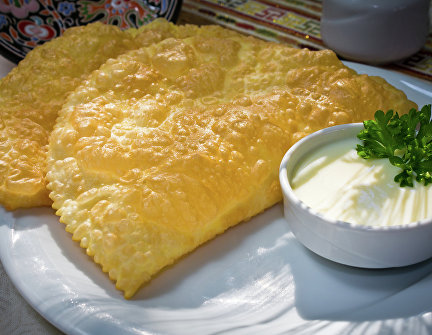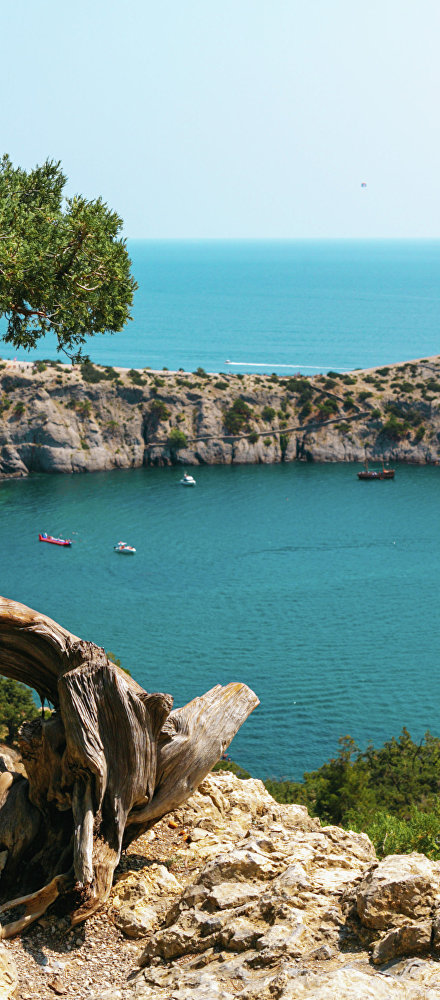This is understandable, for Crimea has wild steppes, subtropical gardens, high mountains, salt lakes, dense forests, coral reefs, caves, mud volcanoes, therapeutic muds, mineral waters, medicinal herbs and mountain streams.
Crimea is a relatively small peninsula — its area is approximately 25,000 sq km — in the south of the East European Plain. Its 980 km-long coast is washed by two seas — the Black Sea in the west and south and the Sea of Azov in the east. Actually, the Crimean Peninsula is surrounded by water on all sides and is only connected to the mainland by a 7km-wide Perekop Isthmus.
There are a lot of small bodies of water on the peninsula, including over 1,500 rivers and streams, most of which dry up in the summer. There are also some 50 salt lakes.
The peninsula has three climate zones: the temperate continental zone of the steppes, the mountain zone and the subtropical zone of the southern coast. The diverse terrain includes the North Crimean plain with the Tarkhankut Upland, which occupies some 70 percent of Crimea, the hills and plains of the Kerch Peninsula and the mountainous area with three ridges: the Main Ridge in the south and the Internal and External ridges in the north divided by valleys.

Crimea is ideal for nature lovers who seek silence and tranquillity. Eco-tourists will enjoy trips across the more than 150 nature reserves and protected areas. The most important of them are protected by the federal government, including the Crimean Nature Reserve with the Swan Islands wildfowl nature reserve, the Yalta Mountain Forest Reserve and the Cape Martyan, Karadag, Kazantip and Opuk nature reserves. These reserves have picturesque eco-trails for walking and trekking.
The Crimean Peninsula is a biologically diverse area with well-preserved steppe and forest ecosystems. Thanks to its isolation from the mainland, the peninsula has unique endemic flora and fauna species.
There are some 2,500 plant species, many more than in European Russia (1,500). Most of them are in the Russian Red Data Book, and some of them are on the international lists and covenants of endangered species. The majority of endemic plant species grow in yailas, or table-shaped plateaus of the Crimean Mountains that are connected by mountain passes.
The widely diversified animal kingdom of Crimea comprises 2,618 animal species. It has been established that ostriches and giraffes lived in Crimea before the Ice Age. When the climate changed, northern deer and Arctic foxes moved to the peninsula. The present-day Crimean fauna is a combination of widely different species, many of which are not endemic but have migrated here and adjusted to the local climate. The largest animals in the Crimean steppes are wolves and foxes, and there are red deer, mouflons, roe deer and fallow deer, as well as Black Sea dolphins, which you can see in fishing villages.
10 ways to enjoy Crimean nature
- Enjoy the view of the southern coast from the Ai-Petri Plateau, which is accessible by cableway
- On a hot day take a dip in the Bath of Youth or in the rivers of the Grand Canyon of Crimea, where water temperature never rises above 10°С
- Hire a boat to the Golden Gate cliff passage in the extinct Karadag volcano
- Find the wandering column of the Mountain King in the 2km-long Marble Cave
- Breathe the healing aroma of relic juniper in the Kanaka grove
- Find the cliff in the Valley of Ghosts in the Demerdzhi foothills on which Nina (Natalya Varley) danced in the famous comedy film Kidnapping, Caucasian Style
- Stumble upon a roe deer while climbing the Chatyr-Dag Mountain
- See for yourself if the Koyash Salt Lake in the Opuk Nature Reserve is really pink
- Get together with your friends to wrap your arms around the 750-year-old Hercules Tauris oak with a trunk girth of 10 metres, which grows near Belaya Skala (White Cliff or Aq-Qaya)
- Compare the lavender fields of the Bakhchisarai District to the lavender fields of Provence























